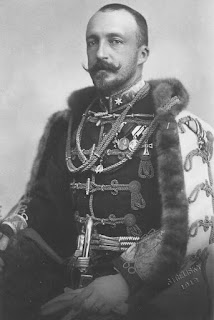Undoubtedly one of the rarest and most famous diamonds in the world, the legendary Archduke Joseph Diamond is distinguished by an impressive size of 76.02 carats, perfect colour, and Internally Flawless clarity. Its origins trace to the ancient Golconda mines in India, the source of the world’s most coveted historic diamonds which are celebrated for their superior luminousness and transparency.
The Archduke Joseph Diamond is further distinguished by its noble provenance, which, together with its superior quality, places it amongst an elite group of historic gems that includes the famous Koh-i-Noor diamond, part of the British Crown Jewels. First recorded as the property of the Archduke Joseph August of Austria, Palatine of Hungary (1872-1962), it is believed that the Archduke passed the diamond to his son, the Archduke Joseph Francis (1895-1957), who deposited the stone into a vault of the Hungarian General Credit Bank in 1933. Three years later, it was sold to an anonymous buyer and placed in a vault where it remained during World War II.
Archduke Joseph August of Austria
(1872-1962)
(1872-1962)
Archduke Joseph Franz and Archduchess Anna Monica of Austria
Undoubtedly one of the rarest and most famous diamonds in the world, the legendary Archduke Joseph Diamond is distinguished by an impressive size of 76.02 carats, perfect colour, and Internally Flawless clarity. Its origins trace to the ancient Golconda mines in India, the source of the world’s most coveted historic diamonds which are celebrated for their superior luminousness and transparency.
The Archduke Joseph Diamond is further distinguished by its noble provenance, which, together with its superior quality, places it amongst an elite group of historic gems that includes the famous Koh-i-Noor diamond, part of the British Crown Jewels. First recorded as the property of the Archduke Joseph August of Austria, Palatine of Hungary (1872-1962), it is believed that the Archduke passed the diamond to his son, the Archduke Joseph Francis (1895-1957), who deposited the stone into a vault of the Hungarian General Credit Bank in 1933. Three years later, it was sold to an anonymous buyer and placed in a vault where it remained during World War II.



No comments:
Post a Comment